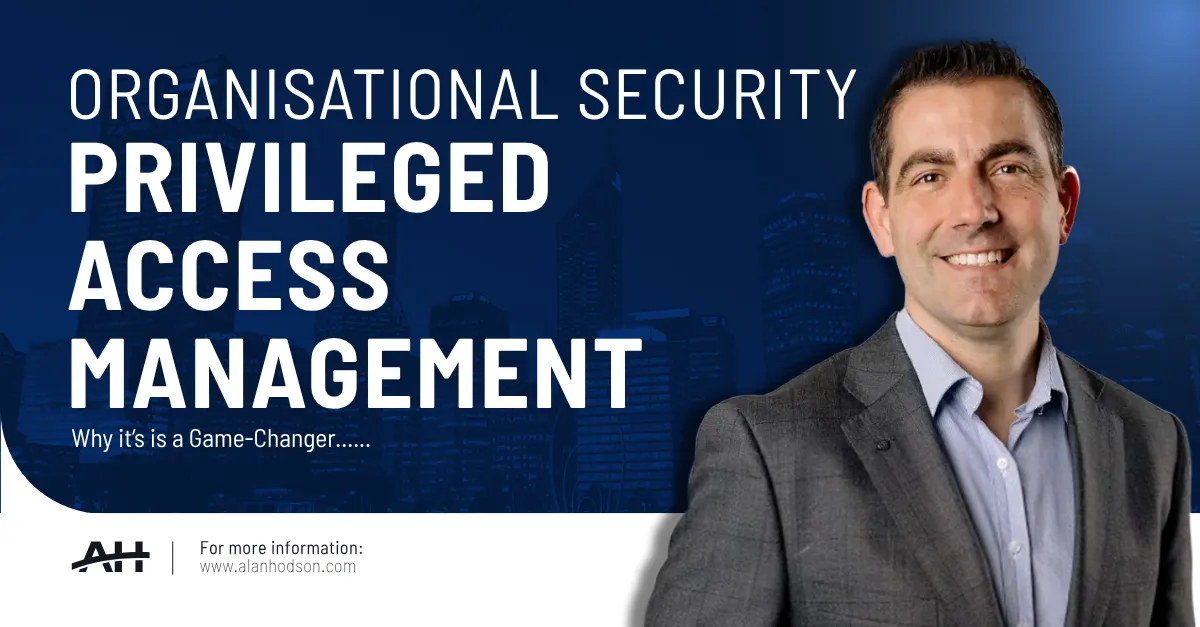
Why Privileged Access Management is a Security Game-Changer for Your Organisation
I want to discuss a topic that’s critical in today’s cybersecurity landscape but often overlooked until it’s too late – Privileged Access Management (PAM).
For CIOs and CTOs managing increasingly complex IT environments, PAM is more than just a tool; it’s a fundamental pillar of adhering to zero trust and least privilege principles.
Understanding How PAM Supports Zero Trust
Zero trust is no longer just a best practice; it’s a necessity. PAM ensures that users, whether they’re contractors, temporary staff, or full-time employees, only have access to what they need to complete their specific task – nothing more, and nothing longer than necessary.
This is especially vital when considering the common scenarios many businesses face. For instance, a contractor might need to perform system maintenance or set up a new user account. With PAM, they’re granted the permissions required to complete their task, for the exact time they’re working. Once the task is done, their access to sensitive systems automatically expires. No residual permissions, no loopholes.
The principle of least privilege reduces the risk of internal threats and common human errors. Over-permissioned accounts, even unintentionally, are like leaving the front door open in a neighbourhood you can’t monitor. PAM ensures the door closes after every contractor or task.
The Risks of Over-Permissioning and Sharing Credentials
One of the biggest security gaps I’ve seen is organisations granting blanket admin access simply because it feels “easier.” It’s a recipe for unnecessary risk, especially for temporary team members or external contractors.
Another common issue is how credentials are shared. It’s astonishing how often I see passwords sent via SMS or email. These methods don’t just undermine your security posture; they actively put your organisation at risk of interception or misuse.
With PAM systems, these outdated approaches can be eliminated. You control access programmatically and only for the right people, processes, and timeframes.
Integrating PAM with Tools You Already Use
One of the reasons I advocate for PAM is its ability to integrate smoothly with technologies many organisations already use daily, like Microsoft Entra, VDI (Virtual Desktop Infrastructure), or cloud PCs. These tools allow a secure way to log in remotely, but PAM adds a vital layer of control.
For example, imagine an administrator hired temporarily for a critical project. Rather than granting them broad system access indefinitely, PAM restricts their permissions to specific systems, using workflows that also enforce proper credential management.
Making PAM a Priority Today
If your organisation hasn’t yet implemented a PAM solution, now is the time.
Start by reviewing your current access control policies.
Look for areas where users have more access than they need or where sensitive tasks rely on shared credentials.
With the proper implementation, PAM not only fortifies your security but also aligns your organisation with the core principles of zero trust. This is about more than compliance; it’s about protecting your organisation’s future in an increasingly threat-filled landscape.
When was the last time you reviewed your access control policies? If you want to know how PAM can integrate with your existing EUC tools and bolster your security, reach out or comment below. I’d love to continue the conversation.
